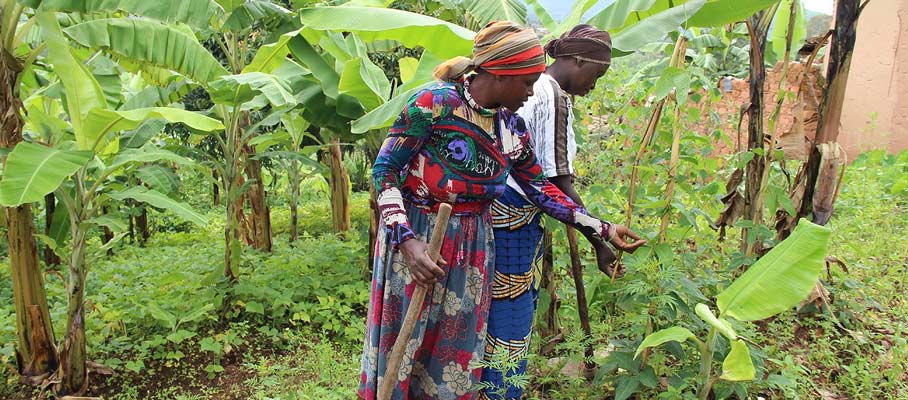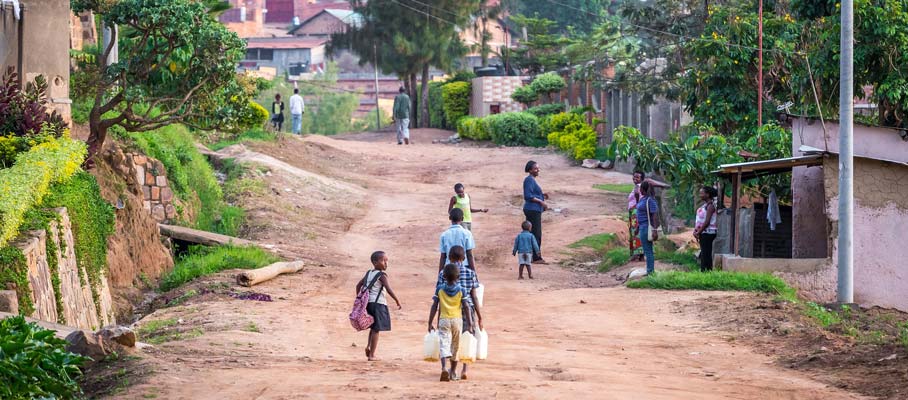How Rwanda Is Building Liveable Cities Of All Sizes With Practical Climate Actions
Rwanda has some of the most ambitious climate goals in Africa and its urban leaders are planning and implementing tangible actions to get there. These will increase city dwellers’ quality of life and protect the environment.
As is true of most African nations, Rwanda’s contribution to climate change is relatively small. But the country’s economy is still growing, which means energy supply, deforestation, and farming of crops and livestock will cause a rapid increase not only in carbon dioxide but also in more harmful emissions like methane and nitrous oxide. The country is already experiencing the impacts of climate change and its cities will face more severe and frequent landslides, floods, severe winds, and rainstorms without urgent and focused action to both limit emissions and adapt to climate change.
Planning For Future-Proof, Low-Carbon Cities
A city’s first step in getting sustainable development projects off the ground is creating climate action plans. The City of Kigali, Rwanda’s capital, as well as the less densely populated districts of Muhanga and Rubavu recently reached this milestone with support from ICLEI Africa and UN-Habitat, who jointly implemented the Urban-LEDS II project funded by the European Union. These plans, called Integrated Climate Action and Low Emission Development Plans, align with the country’s ambitious Nationally Determined Contribution (NDC) and have been approved by their respective councils. This means it’s more likely the cities will receive funding to turn their plans into action.
All three cities plan to install solar and hydro mini-grid systems to supply households and industry with energy that is not only clean, but also reliable and affordable. This is especially key for the rural populations in Muhanga and Rubavu and the outskirts of Kigali, as people can gain access to energy without needing to connect to the national grid. Other energy-related actions the cities plan to take are replacing inefficient lights with LED lamps, distributing improved cook stoves to households, and building more sustainable houses.
Beyond the urban core, the cities want to mainstream agroecology technologies to avoid the expected future emissions from farming and land use. Farming with nature will also improve food security and provide citizens with more diverse foods for better health. Farmers will need fewer pesticides, which improves environmental health and food quality while ensuring cleaner runoff water.

Muhanga District, Rwanda © Sarine Arslanian
In all three cities, about half of the carbon emissions come from the waste sector. To address this, the cities plan to recover and reuse organic waste and wastewater, an action that will also restore and maintain soil fertility. Creating a more circular system will improve the quality of water and reduce waste-related health risks such as dengue fever.
To specifically address the expected future climate hazards, Kigali, Muhanga, and Rubavu are placing a high priority on disaster risk reduction (DRR). They plan to establish early warning systems for natural disasters, so residents are prepared and can listen to local radio stations for guidance on what to do. They also intend to improve the cities’ observation facilities to gain higher-quality climate data, which will aid in early warning. On a grassroots level, they plan to improve farming techniques to make fields more resilient and conduct first aid training. As natural disasters increase the spread of vector-borne diseases, the cities plan to raise public awareness about the topic and the best ways to prevent infection.
Cities Are Already Acting By Financing And Implementing Sustainable Development Projects
The three cities now need to find ways to finance projects that will bring these actions to life. The Urban-LEDS II project started the process with a number of pilot projects. The first addressed the increasing demand for water and energy at the Gitarama and Gahanga Health Centres in Muhanga and Kigali respectively by installing various low-carbon technologies.
Rainwater harvesting tanks with solar-powered pumps created an integrated rainwater harvesting system connected to the existing pipes. The water is used to flush toilets and water the gardens, and filters enable health workers and the community to also drink the water. High-pressure, 300-litre solar hot water geysers ensure the new water supply can also be heated for day-to-day use in the healthcare centre. A range of efficient lighting solutions, including solar street lights, and indoor and outdoor energy-efficient bulbs with motion sensors, decrease energy consumption and its associated costs.

Kigali, Rwanda © Stephanie Braconnier
“It’s not only about reducing water and electricity bills, but also about having a well-prepared health facility. The project also brings hot water for washing and cleaning. So that means the standards – the way we are able to treat the people coming here – is now better than before,” said Mr Bosco Utegerejeyezu, Infrastructure and Street Lighting Engineer for the City of Kigali.
Accessing funds for urban transformation is a major barrier for cities in implementing the actions they identify in their climate plans, so a key focus of the pilot projects was to explore alternative funding sources city officials could tap into.
In Rubavu, one of the Urban-LEDS II pilot projects installed a series of solar street lights along the beach front to allow local traders to stay open later and increase safety along this popular walkway for tourists – boosting the local economy. The city, with support from ICLEI Africa and UN Habitat, used the learnings to apply to the Transformative Action Program (TAP) for doing the same elsewhere in Rwanda. TAP takes infrastructure project concepts and supports cities to get them ready for financing. A concept note for roll-out in Kigali was subsequently developed and submitted to funders and partners.
The process of applying for climate finance is challenging for city officials, but in this case and through Urban-LEDS II capacity building activities, they were able to get first-hand experience in a different approach to financing, as well as the various stages to develop a robust climate finance application.
Rwanda’s urban leaders are making strong progress on their climate journeys. These planned actions and projects are already creating more liveable urban areas that can grow and thrive with the planet’s boundaries in mind.
